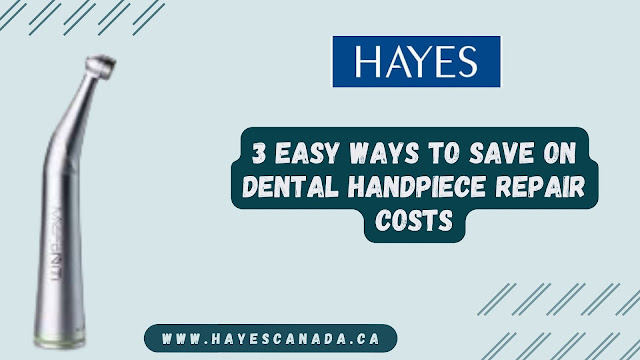3 Easy Ways to Save on Dental Handpiece Repair Costs
Repairing your dental
handpiece can be an expensive proposition, especially if you lack the
know-how to do it yourself. The cost of handpiece repair can quickly add up if
you use it every day and have to replace a lot of parts, so it’s important to
stay on top of dental handpiece repair costs by knowing what to expect and how
to prevent problems as much as possible. These three tips will help you save
money on dental handpiece repair costs without sacrificing the quality of your
work or the performance of your tool.
When things go wrong
No one likes it when things go wrong, but when it comes to
dental handpieces, it's important to be prepared for the worst. Luckily, there
are a few easy ways to save on dental handpiece repair costs. First, follow
these simple steps:
1) Keep up with
regular maintenance and cleanings of your dental handpiece;
2) Store your handpiece in a dry place that doesn't get too
hot or cold;
3) Have an extra set of parts handy;
4) And keep your tools organized! These four steps will help
you avoid downtime and expensive repairs. Plus, they'll keep you prepared in
case something does happen.
Do Regular Checks
Your dental
handpiece is a vital part of your practice, so it’s important to keep it in
good working condition. But regular maintenance can be costly. The best way to
stay on top of dental handpiece repair costs is to do regular checks and keep
the right tools on hand. It's also a good idea to have one or two backup units
on hand at all times. To save money, you may want to purchase high-quality
dental handpieces that are less expensive upfront but cost less over time due
to longer lifespans.
Create a Cleaning Schedule
1. Before each use, remove any visible debris from the
handpiece using a soft-bristled brush.
2. At the end of each day, disinfect the handpiece using a
medical-grade cleaner.
3. Once a week, disassemble the handpiece and clean all of
its parts with a mild soap and water solution.
4. Every month, lubricate the handpiece according to the
manufacturer's instructions.
5. Sharpen the burrs once a year or when they become dull by
either taking them to an expert or doing it yourself with a dental burr
sharpener.
6. Replace worn-out pieces like seals and O-rings as soon as
you notice they're beginning to wear down.




Comments
Post a Comment